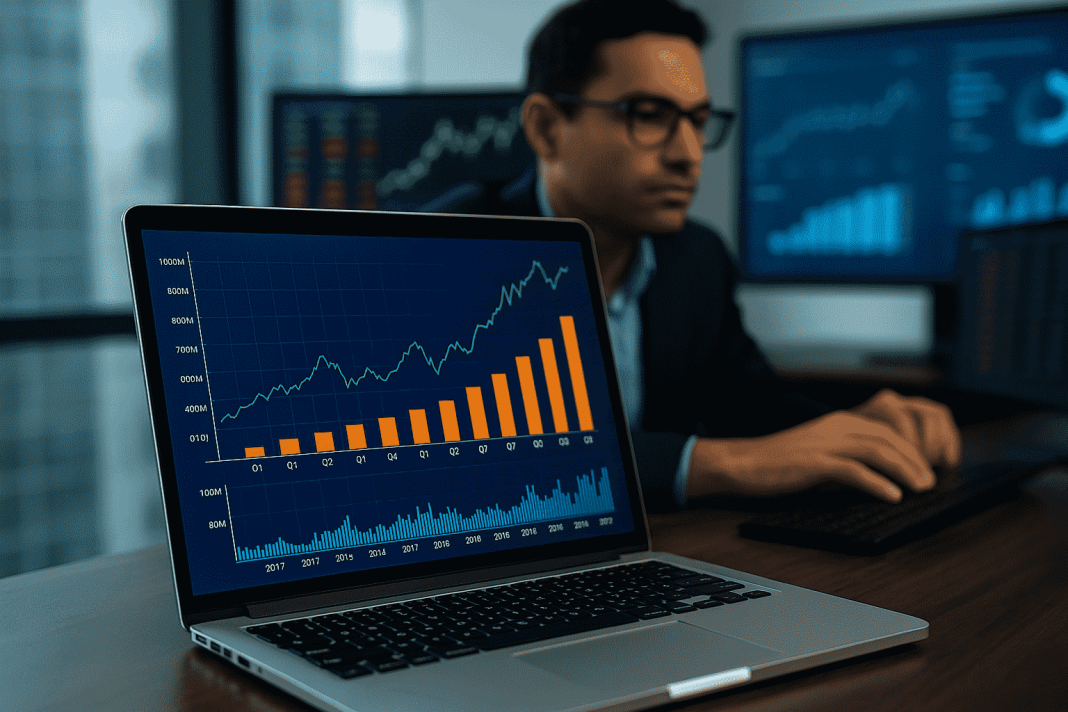The European markets recovery is drawing investor attention after last week’s steep sell‑off caused by new U.S. tariffs. Global trade tensions rattled confidence, but Monday’s trading brought cautious optimism. This rebound offers both opportunities and risks for investors navigating today’s volatile economic landscape.
In this article, we’ll unpack the market rebound, key corporate moves, and how traders can position themselves for what’s next.
Renewed European markets Signals Cautious Optimism
On Monday, the Renewed European markets gained traction. The FTSE 100 index advanced 30.07 points (0.3%) to 9,098.65, while the FTSE 250 climbed 88.79 points (0.4%) to 21,788.13.
These gains followed a turbulent week marked by heightened U.S. tariff rhetoric.
While optimism is emerging, analysts warn that the path forward will be shaped by both economic data and geopolitical developments. For ongoing market insights, the London Stock Exchange news page remains a reliable resource.
Why the Renewed European markets Was Needed
Last Friday’s sell‑off was triggered by fresh U.S. tariffs, ranging from 10% to 41%. Investors also digested a weaker‑than‑expected U.S. jobs report showing just 73,000 non‑farm payroll gains in June.
In a dramatic twist, the U.S. President dismissed the Bureau of Labor Statistics chief, raising concerns about the credibility of official data.
These developments deepened fears of a global economic slowdown. The European markets recovery is therefore as much about rebuilding confidence as it is about regaining lost ground.
Corporate Moves Shaping the European Markets Recovery
Several corporate updates added dimension to the Renewed European markets story:
-
Auction Technology Group announced the $85 million acquisition of U.S. vintage furniture marketplace Chairish, aiming to boost earnings by 2026.
-
Clarkson, a major shipping broker, reported weaker profits due to falling freight rates.
-
Convatec saw share pressure after its CEO began medical leave.
Global Impact on European Markets Recovery
The U.S. market backdrop also played a role. Dow Jones and S&P 500 futures pointed to 0.7% gains, while the Nasdaq eyed a 0.8% rise.
Yet, tariff concerns persist. The U.S. administration’s doubling of steel and aluminum tariffs to 50% has implications for European exporters.
The European markets recovery remains vulnerable to shifts in U.S. trade policy.
Oil Prices and Their Role in European Markets Recovery
Energy prices added another layer to the Renewed European markets narrative. Brent crude eased to $68.80 per barrel from $69.78. OPEC+ has signaled a September production boost of 547,000 barrels per day.
Potential disruptions to Russian crude shipments could send prices higher, creating further uncertainty.
Opendoor Stock Surge: Why This Meme Rally Grabs Attention
Currency Movements in the Renewed European markets
Foreign exchange dynamics also influenced the European markets recovery:
-
Pound sterling rose to $1.3275 from $1.3247.
-
Euro edged up to $1.1555.
-
Dollar weakened against the yen to JP¥147.83.
Currency swings affect export competitiveness and investor sentiment. These fluctuations will remain a critical factor in sustaining the Renewed European markets.
What’s Next for the European Markets Recovery
Looking ahead, investors are awaiting Tuesday’s U.S. ISM Services PMI release. Corporate earnings season will also test the resilience of the Renewed European markets.
Market watchers caution that this rebound is still fragile. Tariff headlines and political developments could quickly shift sentiment.
Investor Strategies in the European Markets Recovery
Navigating the Renewed European markets requires disciplined strategy:
-
Diversify portfolios to reduce tariff exposure.
-
Monitor U.S. data releases closely for trend signals.
-
Stay informed via trusted market sources.
-
Review corporate earnings for sector‑specific opportunities.
Proactive monitoring allows investors to act before market sentiment shifts abruptly.
Staying Ahead in the Renewed European markets
The Renewed European markets offers cautious optimism but no guarantees. Tariff developments, corporate earnings, and global economic signals will determine its durability.
By combining vigilance with flexibility, investors can identify opportunities while managing risk.
In this evolving market climate, the ability to adapt remains the most valuable asset.



